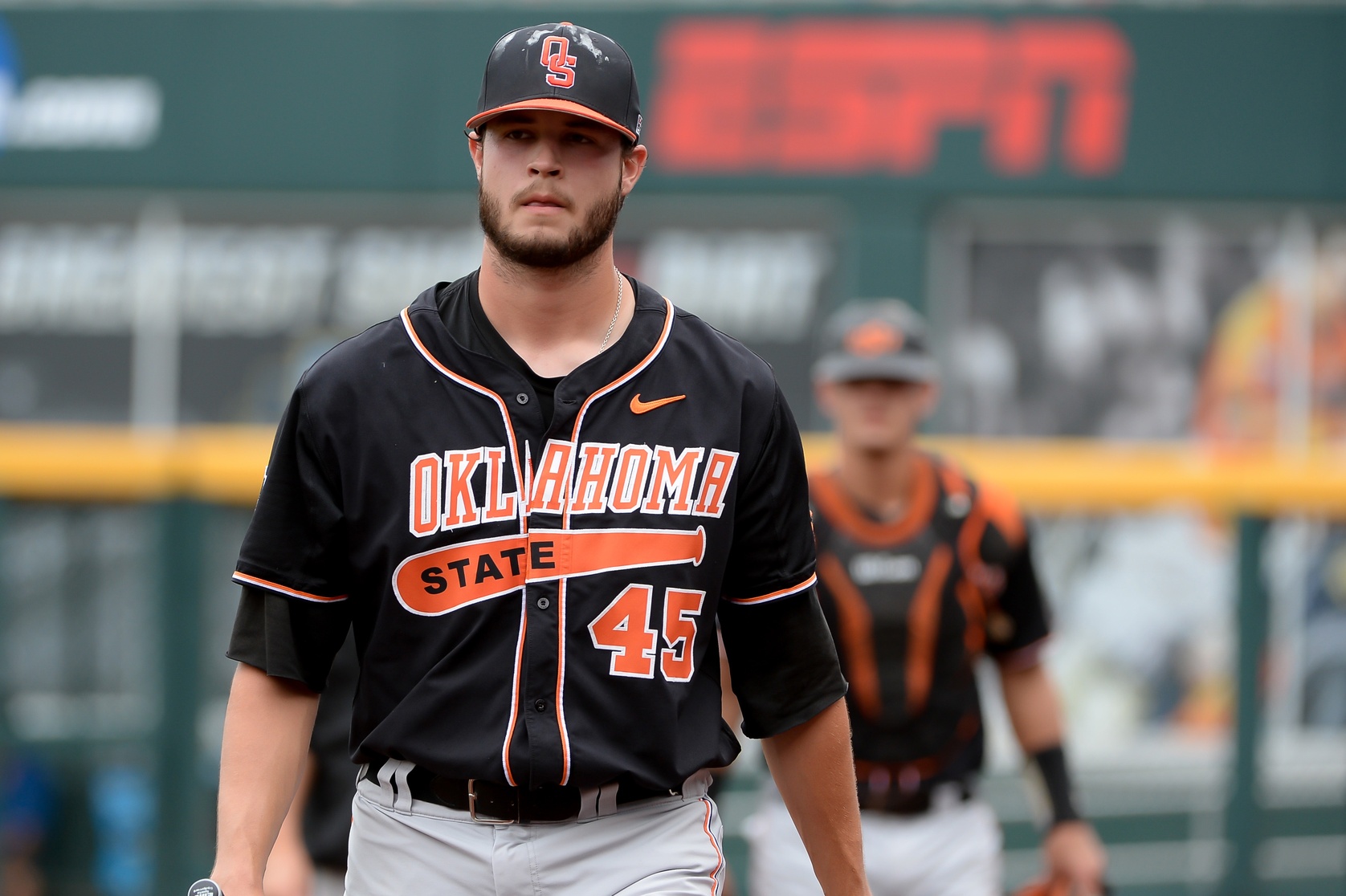Imagine having to follow in the footsteps of Kyle Schwarber, Javier Baez, and Kris Bryant. Try being drafted by a team where an top-tier talent in Albert Almora Jr. is still considered a possibility as opposed to a definite.
That sounds like one tough world—a world where the expectations for the person entering it are very high right out of the gate. Such is the world of third-rounder Thomas Hatch, the Chicago Cubs first draft pick in the 2016 MLB Draft. And even with these high expectations, Hatch is well prepared for the 2017 season.
When the Cubs drafted Hatch they knew what they were getting, as well as the need they were addressing. Hatch is as low-risk, high-reward as a pitcher can possibly be. The only real question mark surrounding him during the 2016 draft was his missed 2015 season because of a UCL strain, but the Cubs turned toward a pitcher like Hatch because he is the kind of pitcher with professional-caliber stuff before ever stepping on a major league field.
To be clear, that doesn’t mean that Hatch is ready to step on the mound like Mark Prior in 2003 and dominate. Rather, Hatch has an arm that is ready to toe the rubber and contribute in at least a meaningful way. That’s what happens when a team targets a pitcher with the pedigree of Hatch, and it’s also the byproduct the Cubs taking their time with him.
The pedigree was formed while Hatch was a student athlete at Oklahoma State University. At 19, Hatch was a work in progress, posting some less-than-appealing numbers, like a WHIP of 1.50. But these numbers belied the stuff underneath. By all accounts Hatch was a youngster learning to pitch at a higher level. After the missed 2015 season Hatch made adjustments, most notably changing his arm slot, and in 2016 his numbers matched his stuff.
Hatch was the horse that the Cowboys rode to their first College World Series appearance since 1999. In 19 games and over a 130 innings pitched Hatch posted a 1.08 WHIP and a 3.39 K/BB ratio. More than just those numbers, Hatch was the man the Cowboys gave the ball to in just about every must win game or tough situation they faced down the stretch.
The Cubs could have easily taken Hatch and plugged him into their minor league system right away last year. The short-season Eugene Emeralds or Low-A South Bend Cubs surely could have used his arm down the stretch and the experience would have fast tracked Hatch to a shot at the big league roster. Instead the Cubs shut Hatch down; he hasn’t pitched an actual game inning since the Cowboys were eliminated from the 2016 CWS. This was a measured move by a Cubs front office who knew that there was more benefit in letting the horse rest rather than continuing to ride him into the ground.
But the above doesn’t really matter if Hatch isn’t able to harness his stuff. Post injury, Hatch has been able to do this, mainly because of the switch from a full arm slot to a 3/4th angle slot. In an article by our very own Jared Wyllys for 2080 Baseball, the progression of Hatch’s stuff, as well as Hatch the man, was covered in depth.
This change in arm slot has led to an increase in velocity. Per Hatch’s college coach Josh Holliday, that meant an increase on his fastball from 92-94 to 95-96. It also meant an increased reliance on the slider and sinker as his secondary pitches. Secondary pitches that he can now command and use to work over hitters.
Most of all, Hatch has shown a willingness to do whatever the Cubs ask of him. When they told him he was going to stay in Arizona for an extended spring training, he stayed and made the most of his time. When the organization sent him to spend a week or so with the South Bend Cubs to simply soak up the minor league atmosphere, he went and absorbed all the minor leagues had to offer. Hatch is already a team player, but he also has a strong desire to learn and improve. He wants new experiences, and to grow, which have classically been intangible hallmarks to success in the majors.
Don’t expect to see Thomas Hatch in a Chicago Cubs uniform in 2017though. Instead, a South Bend Cubs uniform is a more likely possibility. The Cubs are a team full of can’t-miss prospects and insta-studs. The front office drafted Hatch to shore up a rotation that will soon need help. That help won’t be needed in 2017, but it will most likely be needed in 2018 and definitely in 2019. The Cubs are taking their time with Hatch, but in the case of a pitcher with Hatch’s pedigree, it won’t be much time at all until he’s a horse that the Cubs can ride to another World Series victory.
Lead photo courtesy Steven Branscombe—USA Today Sports
